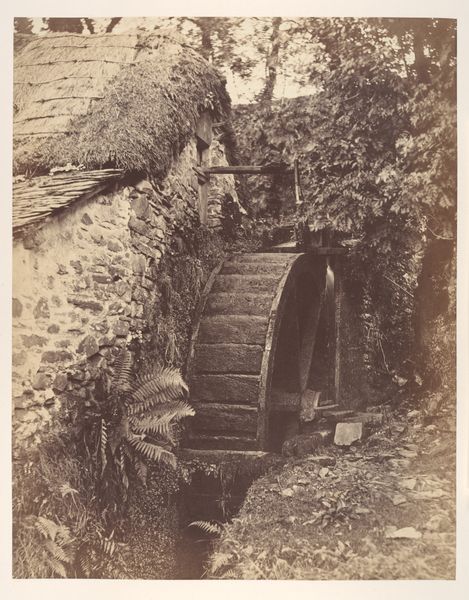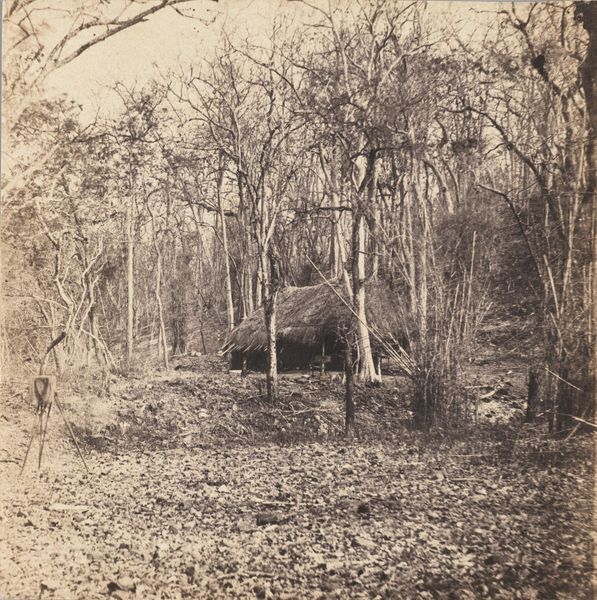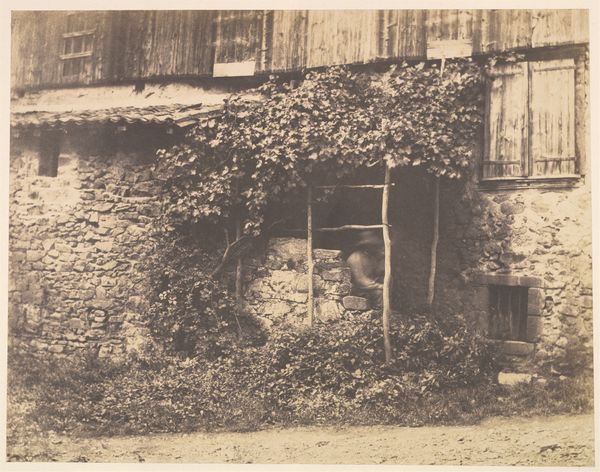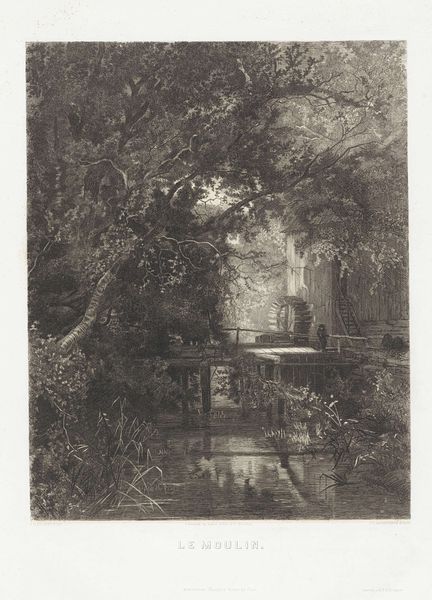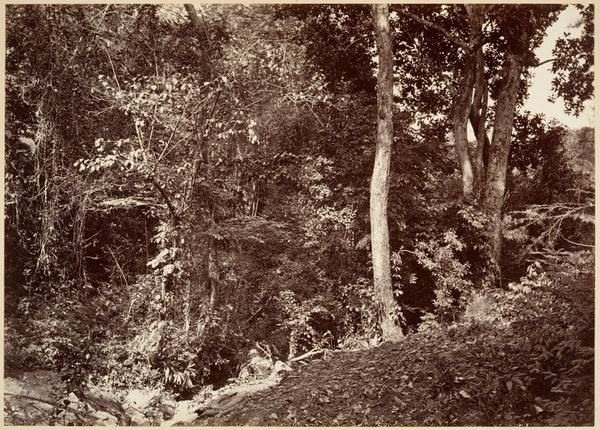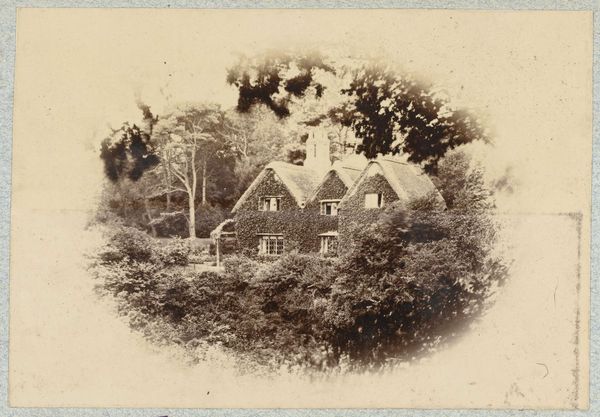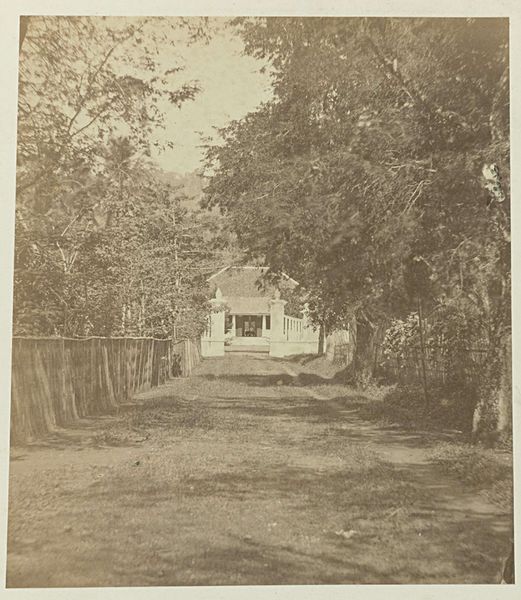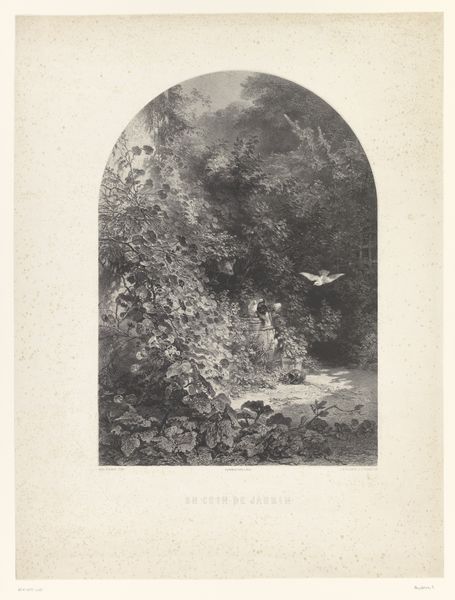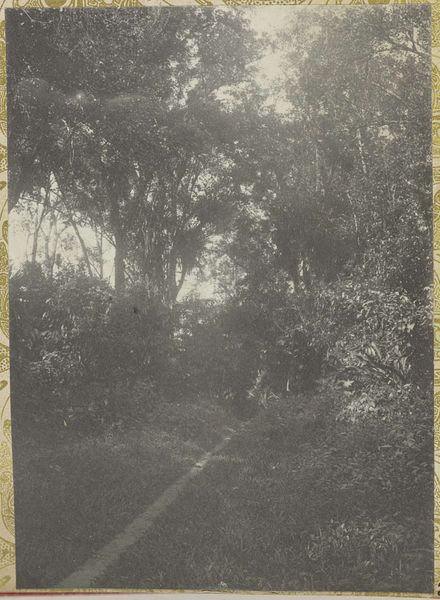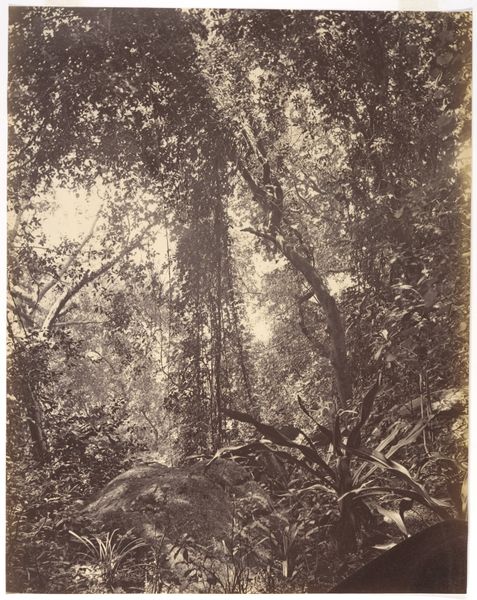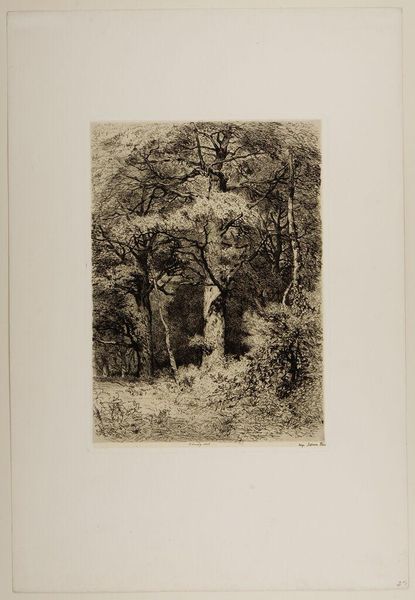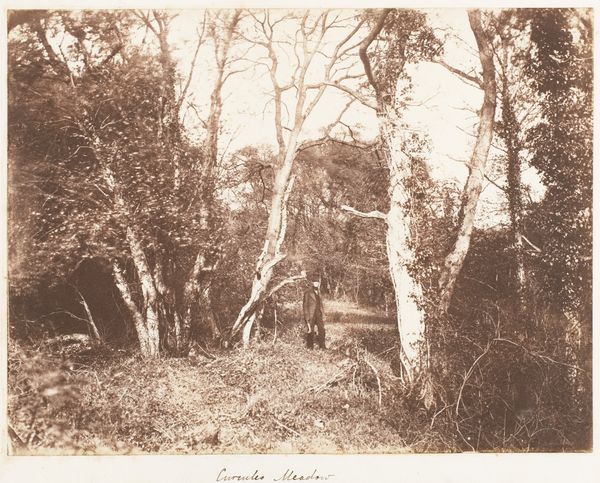
Dimensions: height 271 mm, width 214 mm, height 407 mm, width 314 mm
Copyright: Rijks Museum: Open Domain
Curator: This photograph, "Tuin met klimop," which translates to "Garden with Ivy," was captured sometime between 1860 and 1890 by Georg Maria Eckert. It's part of the Rijksmuseum collection. Editor: It's almost claustrophobic, isn't it? The rampant foliage devouring what looks like a structure. What do you make of this swallowing of architecture by nature? Curator: The ivy, of course, becomes a powerful symbol here. Ivy has often represented memory and attachment. The way it clings so intensely speaks to our persistent ties to the past. It almost feels like nature reclaiming a space, which carries symbolic meaning about how nature can resist oppression by capitalism. Editor: Interesting. To me, the reclaiming is key, the visual embodies the resilience. Consider the rapid urbanization during the late 19th century. Eckert’s image offers a contrasting vision of unchecked organic growth, possibly hinting at resistance to industrialization or, even a critique of power structures during that era. Curator: Precisely! It reflects an anxiety, even a discomfort, around industrial progress and its intrusion upon a simpler, more natural world. Eckert chose to frame nature triumphing. In terms of symbolic composition, look how the doorway nearly disappears, suggesting the architecture, the symbol of stability, is overwhelmed and made ephemeral. It speaks of transience. Editor: Ephemeral but also quietly potent. Look how the doorway, partially obscured, is an interesting perspective about gendered spaces and how women have been confined within domestic boundaries and have reclaimed private environments to nurture and nourish resistance movements. This isn’t simply a photograph of an abandoned space overrun by plant life; the ivy symbolically reclaims domestic narratives by nature itself, defying the expectations of their assigned space. Curator: That's a very compelling read. It does seem to complicate assumptions about passive domesticity. The artist's vision here shows how powerful nature is by taking something abandoned and forgotten, creating both a symbol and a memory of change, growth, and persistence. Editor: Indeed. This photograph, on the surface merely a romantic scene, ultimately reveals much broader statements of social criticism about what power truly means when left unchecked, whether the forces that impose it are socioeconomic or man-made.
Comments
No comments
Be the first to comment and join the conversation on the ultimate creative platform.
